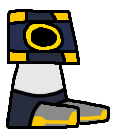
.png)
If there's a character or celebrity you can think of, it's probably already been made by someone in Miitopia. And if they haven't or you're more interested in making original miis, the switch release's new makeup and wigs allow for a level of mii customization that hasn't been seen before.
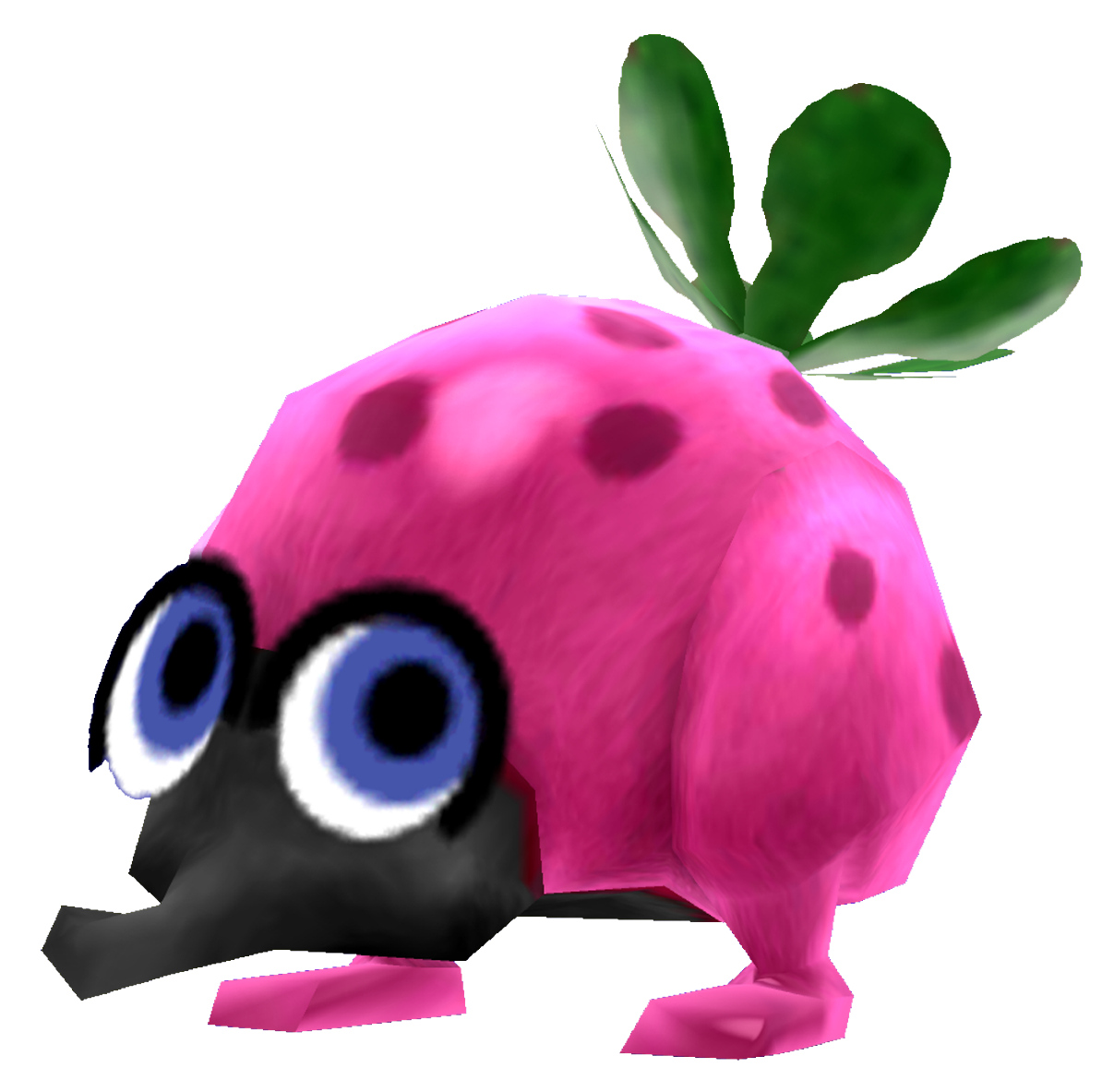
At the end of every route is a Conveniently Placed Inn(TM), where the party is able to rest, eat, and shop for new equipment. Monsters can occasionally drop Grub, and like in Tomodatchi Life, every Mii has their own taste in food. Miis can also go on dates Outings together to relax and raise their relationship level with each other.
Partymembers will over time form relationships with each other and the hero, which gives them new reactions and moves that can proc in a battle if their relationship level is high enough. As an example: if one mii get's hurt, one of their friends might come over to check on them.
My personal favorite is LV. 8, Charity. Each mii carries four snacks that they'll eat to heal: two MP Candy and two HP Bananas. If one runs out of either of their snacks, one of their friends might decide to share with them from their own stock.
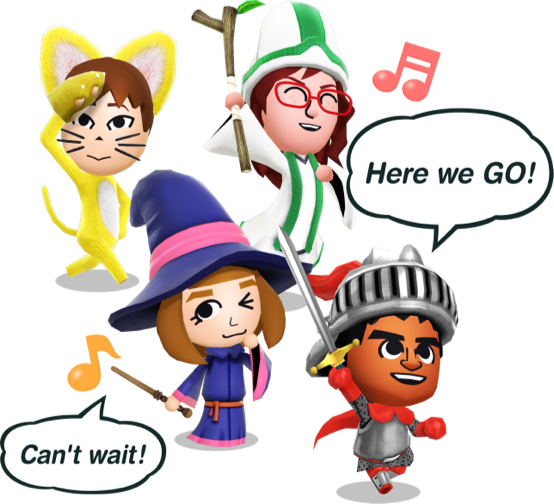
The story is lighthearted and wonderfully weird, and every person who I've met who has played Miitopia has their own lore that they've built up for it, and I think it's in part because the game itself encourages that creativity, in the same way a game like the Sims does.
It's a cute, extremely silly and fantastically well written RPG that I thoroughly recommend.
article added 05/02/2025
5/5

Dwarf Fortress
☼ Beyond Quality! ☼

A Dwarven Outpost: You have arrived. After a journey from the mountainhomes into the forbidding wilderness beyond, your harsh trek has finally ended. Your party of seven is to make an outpost for the glory of dwarfkind.
There are almost no supplies left, but with stout labor comes sustenance. Whether by bolt, plow or hook, provide for your dwarves. You are expecting a supply caravan just before winter entombs you, but it is Spring now. Enough time to delve secure lodgings, ere the lions get hungry.
A new chapter of dwarven history begins here.
Strike the earth!
More of a story generator than a videogame, Dwarf Fortress is a randomly generated fantasy world full of different civilizations, cities, dungeons, necromancer towers, goblin pits, and much, much more.
The world a user generates is persistent, with hundreds to thousands of years of recorded history all proceeding in the background as the game progresses.
![]()
![]()
![]()
![]()
![]()
![]()
![]()
![]()
![]()
![]()
![]()
![]()
Recorded in Legends mode is a record of every historical site, royal, monster, god, and every entity that lived or lives in a DF world, including their entire history and every relationship they had with another actor. On an individual scale, the game keeps track of an entities personality traits, their likes, their dislikes, their health and their simulated organs, their appearance, and their lifelong goals- no two dwarves in a fortress will be exactly alike.

This, combined with the original release's ASCII artstyle and complex simulations, has given Dwarf Fortress the reputation of being a deeply esoteric game with a learning curve closer to a sheer cliff than to a hill.
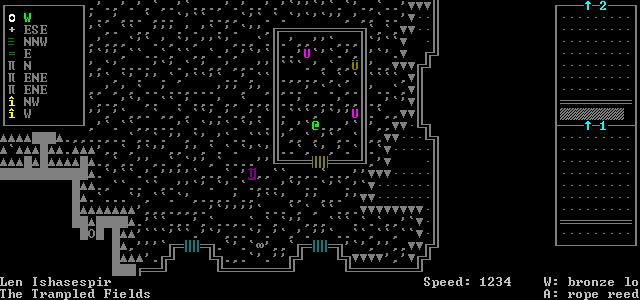
A fortress's win state is only as important as a player makes it- some exist for the sake of good old fashioned dwarven ingenuity, some set out with aspirations of becoming their chosen civilizations mountainhome, and others are just here for a good time. Eventually, though, every dwarven fortress will succumb to entropy. If they didn't, it wouldn't be nearly as fun.
Dwarf Fortress's difficulty curve is actually pretty smooth, once you're able to wrap your head around the graphics and how everything works. The game has a great community, and the game is exceptionally well documented, making it easy to find information on megaprojects or how some mechanics function.
Every entity, body tissue, culture and civilization is defined by a handful of text files and sprites, making Dwarf Fortress easy to pick up and mod, even if you're not very familiar with coding. The game was remastered in 2022 and released on Steam by Bay 12 Games and published by Kitfox Games, adding new graphics, mouse controls, general quality of life changes, a soundtrack of fanmade songs, and ingame tutorials. If you've never played Dwarf Fortress but always wanted to try it, or if you just want to support the creators, I'd highly recommend the Steam release. And if you just want to give it a shot, the original version of the game is totally free on Bay 12's website.
The game is chock full of tiny details, the fun, complexity and difficulty comes from how those details play together.
As an example: Dwarves have simulated emotions, and can experience emotional trauma. If a dwarf is stressed for a significant amount of time, either due to their environment or as a result of trauma, they can suffer a mental breakdown.
Dwarves with a high propensity for anger may throw a tantrum or go berzerk, becoming violent and lashing out at other dwarves. It's not exactly ideal if you care about your dwarves, but it isn't a fortress-ender on it's own.
However, if a dwarf in this state hurts another dwarf, or their pet, or a family member- or destroy a priceless artifact created by another fortress resident- that has a knock-on affect, causing every affected dwarf to also get stressed.
Worse, public tantrums, assault and property damage are illegal in dwarven culture, and dwarven law enforcement is famously heavy-handed. Guilty dwarfs are punished severely- and if that dwarf is killed on accident, their family will also suffer.
These factors together can tank a fortress' overall mood and cause stress to skyrocket- leading to a phenomenon reffered to in the community as a Tantrum Spiral.
Dwarves already on edge are pushed over by the actions of one guilty dwarf- and these dwarves also suffer a mental break, leading to the dwarven equivalent of a riot. While this phenomenon was more common before the game's official Steam release, a Tantrum Spiral can easily destroy a fortress from the inside.
As a less grim example: A megaproject is defined by the community as a large project. Typically, these are large structures or groups of connected structures built by dwarves. These are often community made, and can include gadgets or machines that use furniture or structural items to exploit a game mechanic. My personal favorite is the Dwarven Atomsmasher, which I promise sounds a lot more intimidating than it really is-

A common method of fortress defense are bridges. Bridges can be powered by a lever to raise or lower it- when it's raised, it becomes a solid wall, when it's lowered, it turns into a 'floor' that entities can walk on, if they want.
However, if an item (or creature) is under the bridge when it becomes a floor, it will get obliterated. So obliterated, that the bridge deletes whatever was under it from the game. They're usually used as a safe method of garbage disposal, but given that it can atomsmash living things just as well as nonliving things, it sees heavy use in fortress defense, as long as the creature in question is under 1,200,000 in size. In human terms, this would be approximately the size of an adult elephant.
The only acceptions to this seem to be bags with items in them, since it only destroys the bag, and legendary artifacts, which are instead flagged as 'hidden' and can't be made visible again unless the fortress is retired and then reclaimed.
Dwarves can find families, have children, slay great monsters, learn the secrets of life and death, become creatures of the night, visit the circus, create legendary artifacts, join a worldwide plot to steal that same artifact- The original release's ASCII graphics might look like wet garbage, but that just makes it easier to fill in the gaps yourself.
Like other story generator games, like Rimworld, Caves of Qud, Cataclysm: Dark Days Ahead, or Project Zomboid, Dwarf Fortress isn't a game that's meant to be won.
It's meant to be lost, and losing is fun.
☺ e U g k B T l g m d c

article added 04/10/2025
5/5
Image Sources
All other screenshots and sprites sourced from Bay 12 Games and the Dwarf Fortress Wiki

SPORE
God Game, Life Simulation, RTS - MAXIS, 2008
Spore is a fantastic game with a complicated and controversial history. It's development began as far back as 2000, though was delayed heavily until it's release in 2008. Using it's robust Creature Creator (And Vehicle Creator, Building Creator, and later Adventure Creator added by it's second and final expansion, Galactic Adventures), you can make weird little aliens, spaceships, buildings and more, and upload them to the Sporepedia for other players to put into their games, (As long as you're logged in), or you can jump straight into a new game, choosing a planet from the main menu and beginning as a single-celled organism.
The game is separated into five Stages-
The Cell Stage, a top-down action stage.
The Creature Stage, a 3D free-roaming Adventure.
The Tribal Stage, a Real-Time Strategy.
The Civilization Stage, a Strategy game based on Sid Meyer's Civilization.
And, finally, The Space Stage, a Wing Commander: Privateer, Elite Dangerous styled space exploration stage.
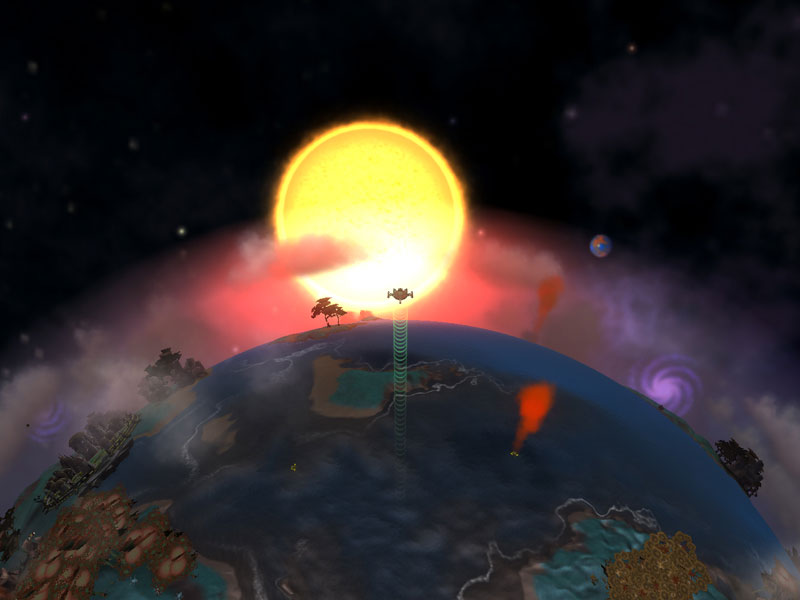
While it's gameplay can be sort of underwhelming in certain Stages, each has it's own associated Creators, creature parts, and unique mechanics. The most popular, and my personal favorite, is the Space Stage. After discovering space travel, the player and their species are set loose in a giant spiral galaxy containing hundreds of procedurally generated planets and star systems, full of creatures and civilizations populated both by species the player has made, and ones downloaded over the internet.
The player explores, terraforms planets, and does missions for other alien societies, all with the final goal of reaching the Galactic Core at the center of the galaxy.
Spore is a fantastic toybox of a game that suffers both from the significant delays and feature creep of an eight-year development cycle, and from an extremely controversial form of DRM known as SecuROM.
Along with the security risks common to SecuROM, a physical copy of Spore could only be installed to a system a handful of times before it refused to reinstall, effectively locking the disc and requiring the user to buy a new copy.

It was extremely spotty and often couldn't tell if the system was a different computer, or if a component like a graphics card had been changed, and like a lot of other Maxis titles, the game has spaghetti code. If the game had an error that could only be fixed with a fresh install, that would also eat into a disc's limited number of installations, meaning that a copy of Spore could be bricked by no actual fault of the user.
While this was likely intended to hinder secondhand game sales and curb piracy, over the years it's had the opposite effect- giving Spore the enviable position of being One Of The Most Pirated Games Ever at an estimated 1.7 million downloads.
There's also the controversy surrounding the 'Bots Parts Pack', a DLC pack of robotic parts for the Creature Creator. Originally released as a promotion for Doctor Pepper, these parts are now no longer available. And despite what the marketing for the campaign said, not 'every bottle' was a winner- meaning that some people who participated didn't even get a code. The controversy only got worse when it was discovered that the Parts Pack already included the then unreleased Patch 1.06. This was very much the style at the time for Electronic Arts, as the Sims 3 featured a similiar crossover with Doctor Pepper and no less than five unique sets of items and two new lots.
While there are mods and programs that will unlock these parts, creations using Bot Parts can't be shared to the Sporepedia unless a user has a legitimate code from back when the promotion was still running, or got lucky contacting EA Support.
![]()
Today, the game still has an active community, and the service used to download and recieve creations from the internet, Sporepedia, is alive and thriving, having been picked back up by a new moderation team in 2023.
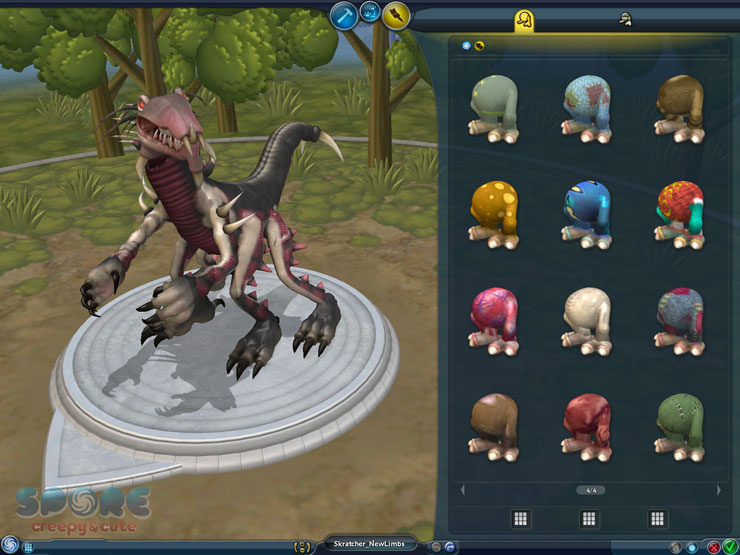 Much like Creatures, Spore creations can also be shared manually and offline, as the game saves every creation the player makes as a PNG. This PNG contains everything from the individual parts to the creature's evolutionary information if they happened to be used in the main game, meaning that even if the servers go down, people can still share their creations with their friends and the wider internet.
Much like Creatures, Spore creations can also be shared manually and offline, as the game saves every creation the player makes as a PNG. This PNG contains everything from the individual parts to the creature's evolutionary information if they happened to be used in the main game, meaning that even if the servers go down, people can still share their creations with their friends and the wider internet.
And, in the spirit of sharing, I've uploaded my favorite Spore creation that I've ever made to neocities so that people can enjoy them, too. Please take good care of them, they're very sensitive.
All you need to do is right click the image below, and save it to your computer as a PNG. When you're in the Creature Creator, turn the game to windowed mode and drag and drop the PNG into the game. (As a note, you'll probably need to have a mod that removes creature complexity, or you'll have to remove some parts, otherwise you'll get an error and won't be able to save and exit the creator.)
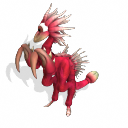
article added 04/06/2025
5\5
All other screenshots and icons sourced from spore.com
Black And White
God Game, City Builder - Lionhead Studios, 2001
Are you a blessing, or a curse? Good, or evil? Be what you will, you are destiny.
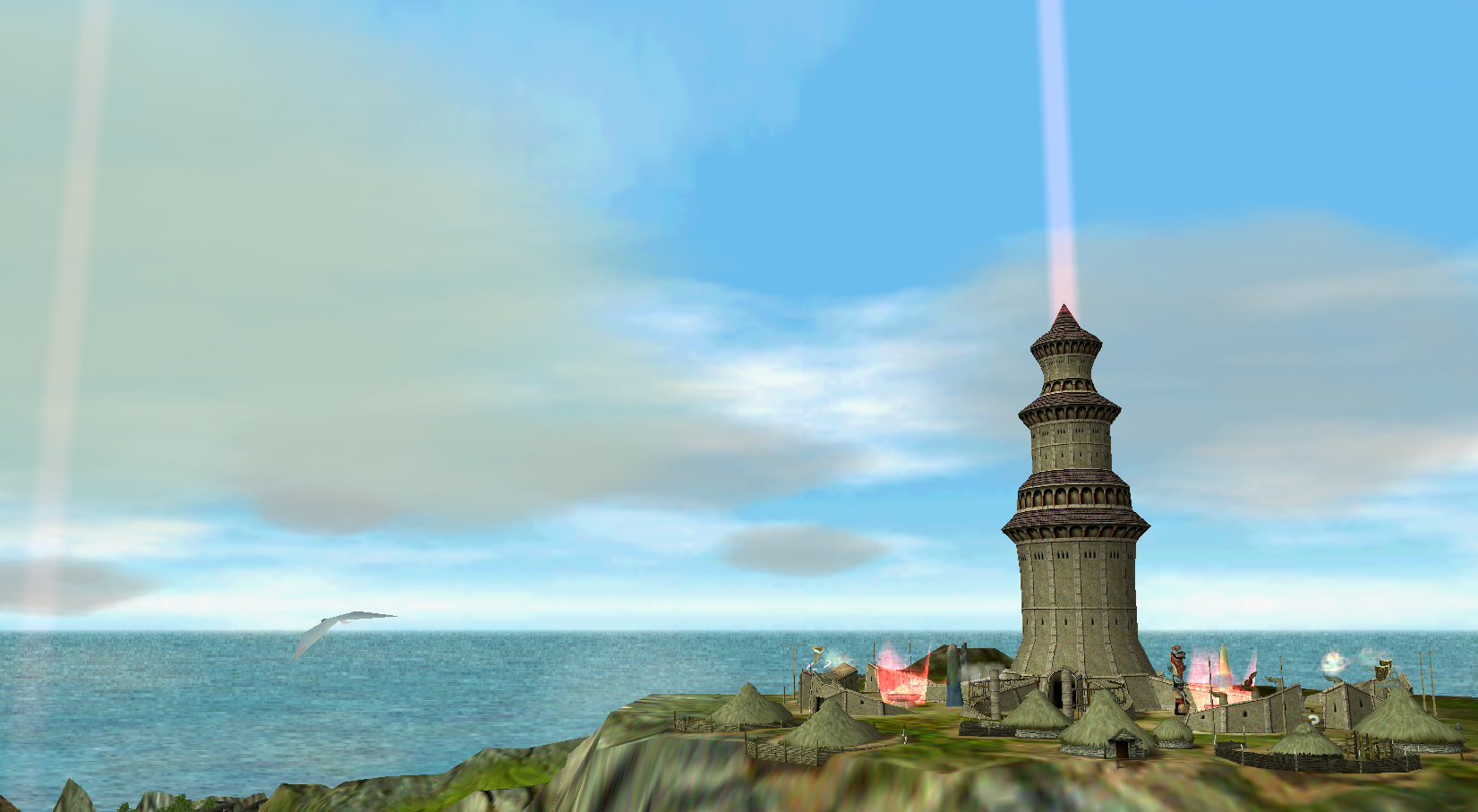
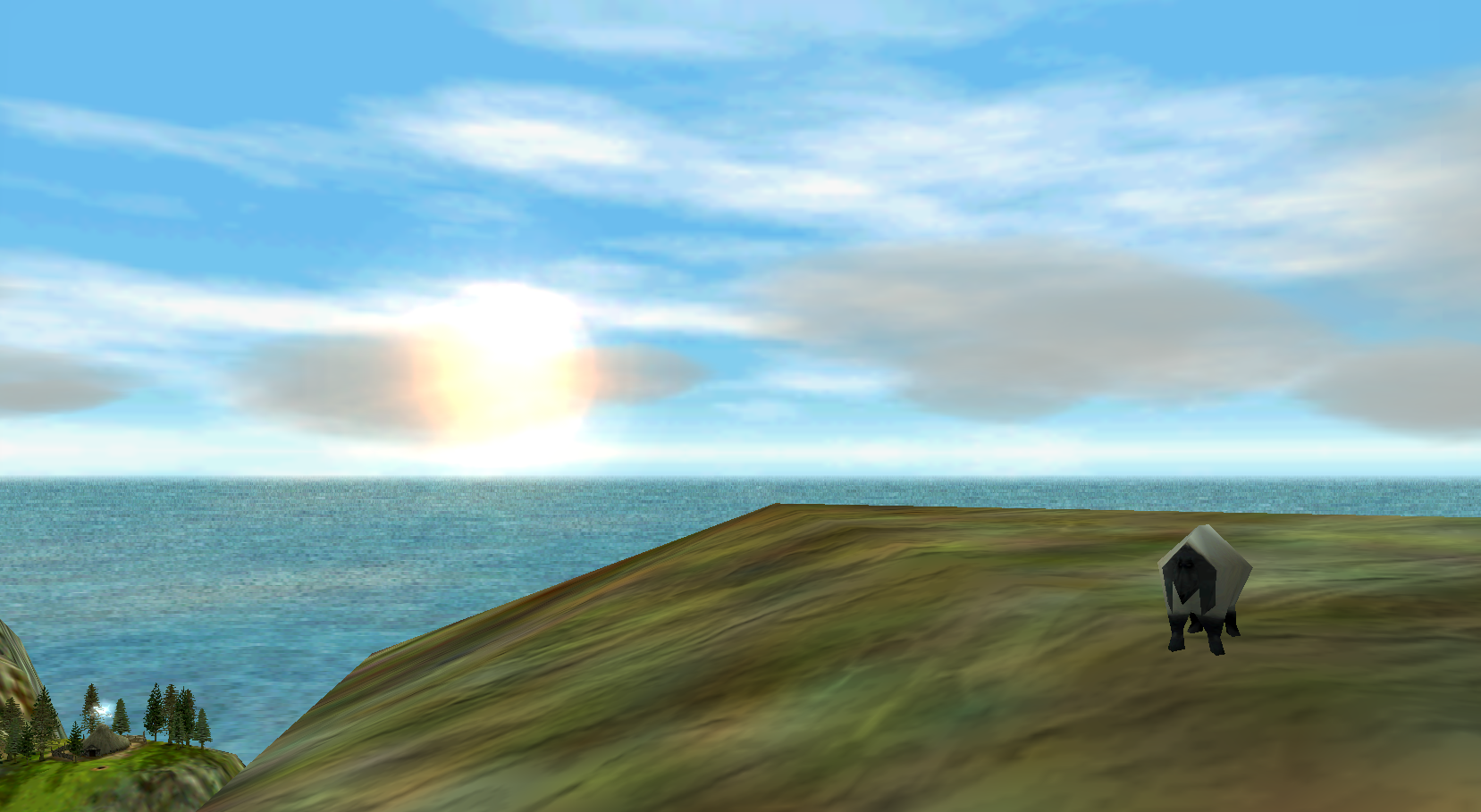
And evil is flashy and dangerous, just as good at violently protecting a village as it is at burning one to the ground!
And if you're not interested in keeping people safe and healthy because it's the right thing to do, a village's population and health is also important for maintaining belief and productivity. Villagers will breed and have children, who will grow up and move into a spare home in the village once they're of age. Keeping people housed and fed is just as important as converting new villages, both for their overall health and for supporting your other villages. And if people stay happy and healthy, it's a lot harder for other gods to convert them and easier to rebuild if something catastrophic happens, making good actions best for the longterm survivability of a village.
Miracles also require a stream of prayer power to cast, supplied by villagers who worship at a worship site in the temple. Larger villages mean more worshippers and stronger miracles as a result, but they need to be carefully watched over and given breaks to keep them from working themselves to death- and it is just as evil to allow your people to waste away at an altar than it is to throw them into the ocean.
Terror is an extremely effective way to convince villagers to convert, but it has diminshing returns on belief like anything else. And if a god mistreats a village for too long, they'll start praying for Mercy, a unique need that only appears if a village's needs are neglected for too long, or if a large quantity of villagers die in a short amount of time, whether that's directly a god's fault or not.
Any god can provide Mercy just by helping rebuild and it can net a lot of belief for little work, meaning that it's easy for an evil god to farm large amounts of belief quickly by destroying a village and then quickly 'helping' to fix it, effectively selling the villagers a solution to a problem that their own god caused.
Evil also includes a number of offensive spells useful for fending off other evil gods or their creatures- sure, throwing lightning at someone's dog is kind of a dick move, but you could easily argue that letting their dog eat one of your friends' kids isn't ideal either. Evil might be dangerous, but it's as dangerous for other gods as it is for you.
A god can only freely cast spells and manipulate objects within their influence. If they stray too far out from their influence, they'll become intangible and won't be able to interact with the world until they return to their territory. While influence can 'stick' to gods for a short time outside of their territory, allowing for them to interact with objects and cast spells just outside of their ring, it doesn't last for long, and will quickly drain.
Villagers can also be made disciples if placed near objects of interest. Depending on their job, they'll work for the rest of their natural lives at the job site they're placed in, or until the player dismisses them. If the resources they're looking for aren't nearby, they'll travel across the map to find them.
A player can also act outside of their territory by throwing long-ranged miracles over areas beyond their influence, making spells like fireball, lightning, and spells that summon animals useful for remotely converting villages.
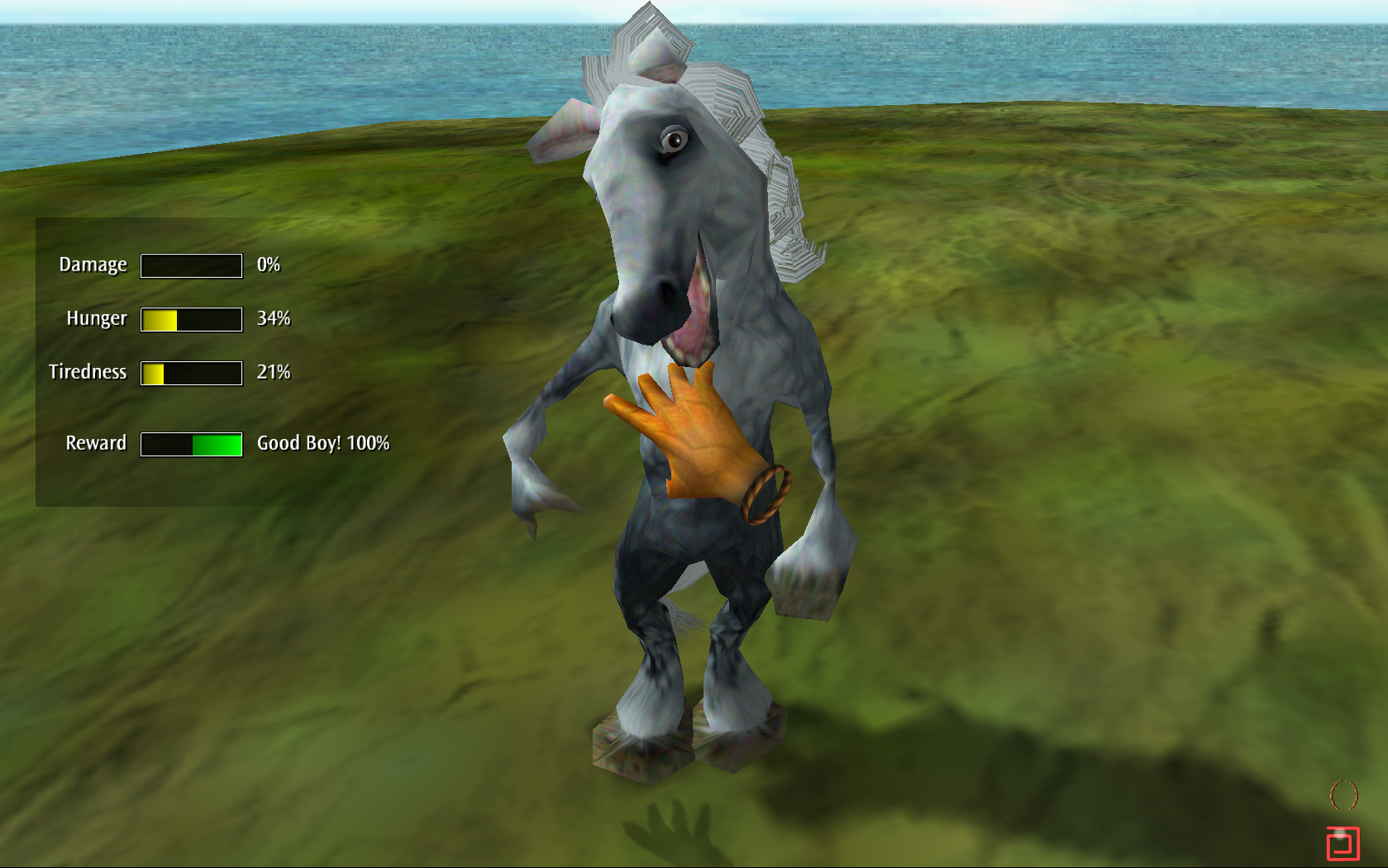 There's also your Creature- a giant, bipedal a-life animal who acts as your right hand man, and is one of the game's main selling points thanks to their advanced AI. Depending on what they watch you do, and what you encourage them to do, they'll also gain an alignment towards good or evil. They can learn to cast Miracles, which is either great for good gods or dangerous for evil ones, since your Creature usually learns by watching what you do. They'll learn how to farm, fish, throw things and generally help out around the village, if you show them how.
There's also your Creature- a giant, bipedal a-life animal who acts as your right hand man, and is one of the game's main selling points thanks to their advanced AI. Depending on what they watch you do, and what you encourage them to do, they'll also gain an alignment towards good or evil. They can learn to cast Miracles, which is either great for good gods or dangerous for evil ones, since your Creature usually learns by watching what you do. They'll learn how to farm, fish, throw things and generally help out around the village, if you show them how.
You can also pet them by rubbing them with the cursor, which is as cute as it sounds.
The first game also has a pretty wide variety of Creatures on offer that can be unlocked as rewards for quests, and more with the addition of creature unlocker applications and the game's one and only expansion, Creature Isle.
Unfortunately, due to Lionhead's aquistion by Microsoft, and since EA owns the publishing rights for the game, it has never been rereleased, and is widely considered to be abandonware. Ironically, it also means that the only way to play it without finding a physical copy is to pirate it.
Creatures
Life Simulation - Creatures Labs, 1996
creatures - Un Named
━ ▢ 🞪







It's a series I feel really strongly about. Norns, and later Ettin and Grendel in Creatures 2, 3, and Docking Station, are contained to a single 40-70KB file that's designed to be shared over the internet. The games have a robust modding community, and thanks to tools like the Genetics Kit, making and sharing custom breeds and unique genomes is super easy. Since genomes and personality are contained to one file, and because custom breeds can cross-breed with each other and with any vanilla species, every Creature you hatch or find online is going to be special in some way. (If you've got the mods downloaded already anyway- but people are usually pretty upfront about that.)
 The games have a very strange relationship with their own Creatures- While Norn, Ettin and Grendel all have mapped DNA, genetics and biochemistry, and the game repeatedly reminds the player to care for their creatures as if they were truely alive, that same grace is only afforded to Norns and later Ettins. Grendel- a species of large, green, bipedal reptiles based after their namesake from Beowulf- are one of the major threats players and their packs of creatures will encounter, along with disease, food logistics, and the environmental dangers of Albia and the Warp. Grendel, according to the manual, are happy to beat the everloving hell out of any Norn they see, and are vectors of disease that can devestate a population.-
The games have a very strange relationship with their own Creatures- While Norn, Ettin and Grendel all have mapped DNA, genetics and biochemistry, and the game repeatedly reminds the player to care for their creatures as if they were truely alive, that same grace is only afforded to Norns and later Ettins. Grendel- a species of large, green, bipedal reptiles based after their namesake from Beowulf- are one of the major threats players and their packs of creatures will encounter, along with disease, food logistics, and the environmental dangers of Albia and the Warp. Grendel, according to the manual, are happy to beat the everloving hell out of any Norn they see, and are vectors of disease that can devestate a population.-

-If you're a coward that believes everything the manual tells you, anyway.
In reality, Creatures 1 Grendel don't spread disease- the only difference in their AI and genetics from Norn is that they have different sprites, they're always infertile, and that they have a custom script that makes them likelier to slap other creatures- though whether this is due to their actions for kissing and slapping being swapped, or if they're just unlikely to kiss, is unclear.
Likewise, Creatures 3's manual also offers some solutions for keeping Grendel out of a habitat containing Norns, but the most common is by using a gadget system consisting of a Grendel Detector and a Sludge Gun. This device is activated by proximity to nearby Grendel, and will shoot them dead if they don't retreat.
The first tip Creatures 1 ever provides is to treat these creatures as if they were alive, but if that only applies for Norns and not Grendel, (who again are extremely similiar to Norn under the hood), then this feels disingenuous. While Creatures 3+Docking Station make breeding and raising Grendel easier and less dangerous for your Norn and Ettin population, Creatures 1 requires mods to disable the CAOS script that forces Grendel to be more aggressive. For anyone interested in learning more about Grendel training, Discover Albia has a fantastic article about it, and includes links to COBs that make raising them easier: discoveralbia.com
 Unfortunately, since Creatures is an older game, finding documentation that isn't hidden away on a long dead website is a pain in the ass. Given that the game emulates your Creature's biochemistry, it's probably best to play with the wiki open in the background, that way you don't accidentally fire your Norn off into space through the airlock, or inject them with 200CCs of a chemical that's sole purpose is to unravel ATP.
Unfortunately, since Creatures is an older game, finding documentation that isn't hidden away on a long dead website is a pain in the ass. Given that the game emulates your Creature's biochemistry, it's probably best to play with the wiki open in the background, that way you don't accidentally fire your Norn off into space through the airlock, or inject them with 200CCs of a chemical that's sole purpose is to unravel ATP.Docking Station is, likewise, sort of a mixed bag. It was a free expansion/demo for Creatures 3 that introduces online features to the typical Creatures experience. It's official servers went offline years ago, and since the game is always-online and requires an account/internet connection, it isn't playable without mods. But, thanks to dedicated fans, fanservers and 'offline mode' patches, the game is still playable, and Creatures 3 + Docking Station is one of the more popular games with long time fans. For more information on getting Docking Station to work on modern PCs, click here.
If the performance issues and 90's a-life jank hasn't turned you away and you're still interested, all of the games have been re-released on Steam and GoG! I'd personally recommend starting with Creatures 1- it's vibes are immaculate if you like early CGI and pre-rendered backgrounds and is a good starting place for someone new to the series- but my favorite is Creatures 3 and Docking Station, which I'd recommend if you're looking for a more streamlined experience and more quality of life features. I also included some links to some fansites below, if you're ever interested in giving alien-rearing a shot!
hatchery
━ ▢ 🞪

article added 04/05/2025
3/5
tip of the day - sources and links
━ ▢ 🞪

- The first Norn ever born was named Ron! He was made to demonstrate the original prototype of Creatures, and the Ron Norn breed is theorized to be descended from him. ✪
- Albia was originally a physical model designed by Mark Rafter and built by Complete Fabrications! It was photographed and digitized, and while much of the original diorama is now gone, it survives as the background for Creatures 1! ✪
articles.lnk
━ ▢ 🞪